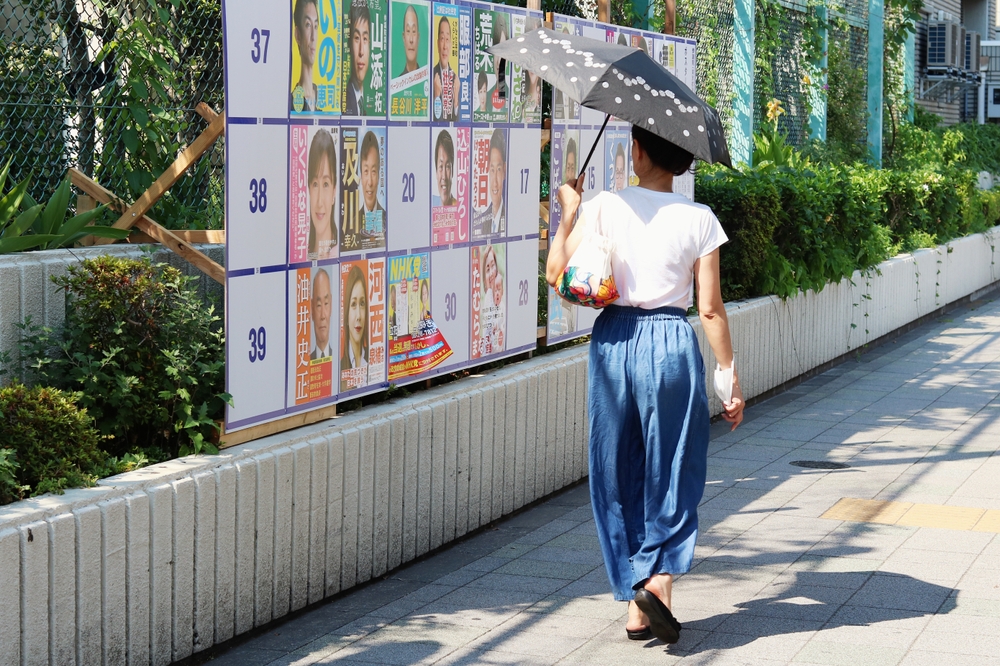Staying Cool this Summer season: Japanese Higasa
Utilizing a contemporary higasa (Japanese solar parasol) has been proven to chop warmth by as much as 10 levels. Having been utilized in Japan for almost 2,000 years, we determined to have a look again on the folding cover’s colourful historical past.

The Historical past of the Higasa
Invented in Egypt over 4,000 years in the past, solar parasols have been first seen in Japan within the fourth century, once they have been utilized by the Japanese the Aristocracy. The primary higasa have been fabricated from silk and used primarily for ceremonial functions.
Round 300 years later, within the Heian Interval (794-1185), the higasa paper method was launched to Japan from China. This improvement steadily made them extra accessible and simpler to provide.
By the point of the Muromachi Interval (1336 to 1573), higasa have been utilized by many of the inhabitants. From aristocrats to farmers, it was seen as a strategy to defend from the solar’s shiny rays. It was particularly frequent for kids to make use of higasa. Come summertime an abundance of higasa could possibly be seen displayed throughout generations.
Within the late 1500s, youngsters’s higasa have been elaborate with black lacquer handles, embellished with bells, tassels or different elaborations. Probably the most dominant colour was blue, although some variations included as much as 5 colours.
Controversy
Japanese parasols continued to develop in recognition and by the 1700s most kids had their very own for the new summer season. Higasa designs grew to become extra elaborate and detailed, with artisans portray colourful scenes and patterns onto the paper.
In 1749, the usage of the higasa for adults was banned in Kyoto by the shogunate. Regardless of this, manufacturing continued. In 1804, the attractive designs that had develop into frequent proved a sticking level as higasa use was additional banned below the ‘no luxurious items’ austerity coverage.
The prohibition unfold from Kyoto to different cities together with Osaka. The ban, nonetheless, had the alternative impact, ensuing within the higasa turning into much more fascinating. Then cloth parasols from the West arrived in 1868. In consequence, the standard paper Japanese higasa began to develop into scarce. It was saved for particular events, typically paired with a kimono.
Quick ahead to the twenty first Century and the principle forms of higasa are fabricated from nylon with a silver lining to guard the person from the solar.

Fashionable Higasa (Japanese Parasol)
Whereas the West has largely deserted the usage of the parasol, the customized lives on within the Land of the Rising Solar. It is not unusual to see women and men strolling the streets carrying what appears to be like like an umbrella on a sunny day.
In Japan, which has just lately been seeing record-breaking sizzling temperatures and humidity, any strategy to defend and cut back the blazing warmth is a blessing. Common warnings towards warmth stroke are heard through loudspeakers all through cities and on the information. It is, subsequently, simple to see why Japanese solar parasols have been having fun with a resurgence in recognition.
As well as, trendy Japanese higasa for on a regular basis use are sturdy and are similar to umbrellas. Many double up as each, and may even be folded making them simple to hold round. The principle distinction is that devoted Japanese parasols have a silver lining or outer coating designed to deflect the warmth away from the particular person beneath.
Utilizing trendy expertise, higasa makers declare that carrying a Japanese parasol for simply 10 minutes can cut back the warmth by as much as 12 levels. Some higasa manufacturers even incorporate supplies reminiscent of titanium into the duvet itself, enabling warmth deflection of as much as 37 p.c.
Unisex Higasa
Traditionally, higasa have been utilized by all sexes however all through the twentieth Century, the picture of them being for ladies grew to become prevalent, with many ‘female’ designs together with lace.
This picture, nonetheless, has been altering. Manufacturers reminiscent of Montbell, Yohji Yamamoto and Journal Customary have all launched their very own vary of unisex umbrellas, some marketed as being for each solar and rain.
Whereas there are new, branded higasa, previous paper kinds are nonetheless about, with some firms in Kyoto and Osaka painstakingly crafting them to today. The fragile designs carry favor for photoshoots and one-off particular events.
After a surprisingly blended historical past, it appears the higasa is right here to remain.
